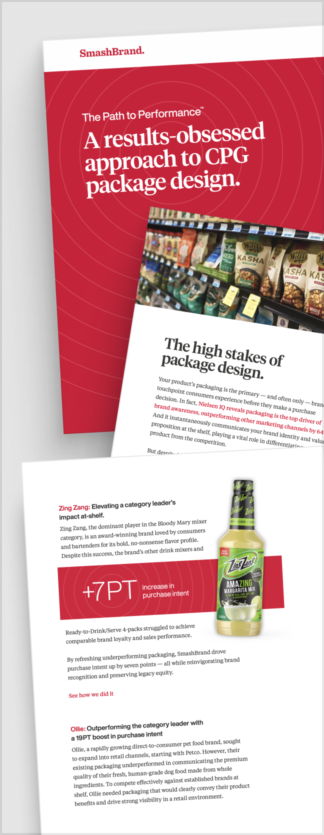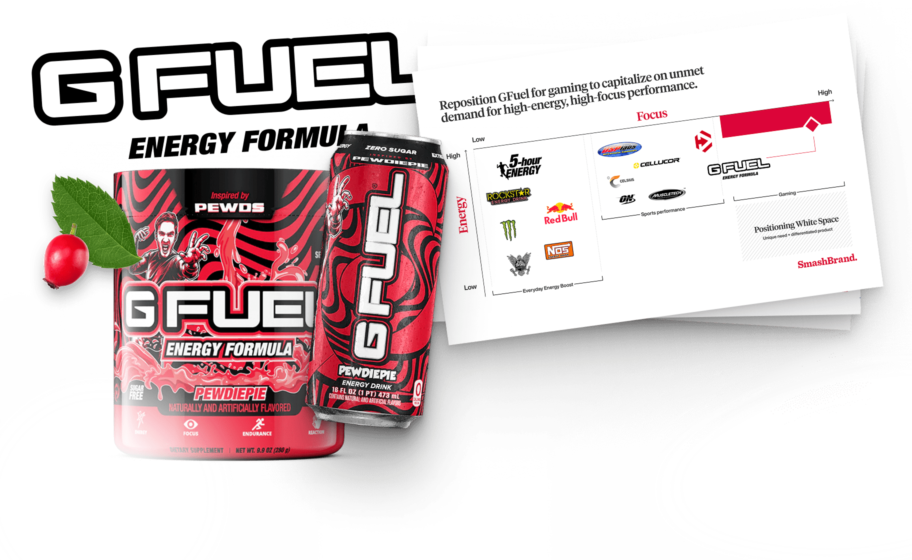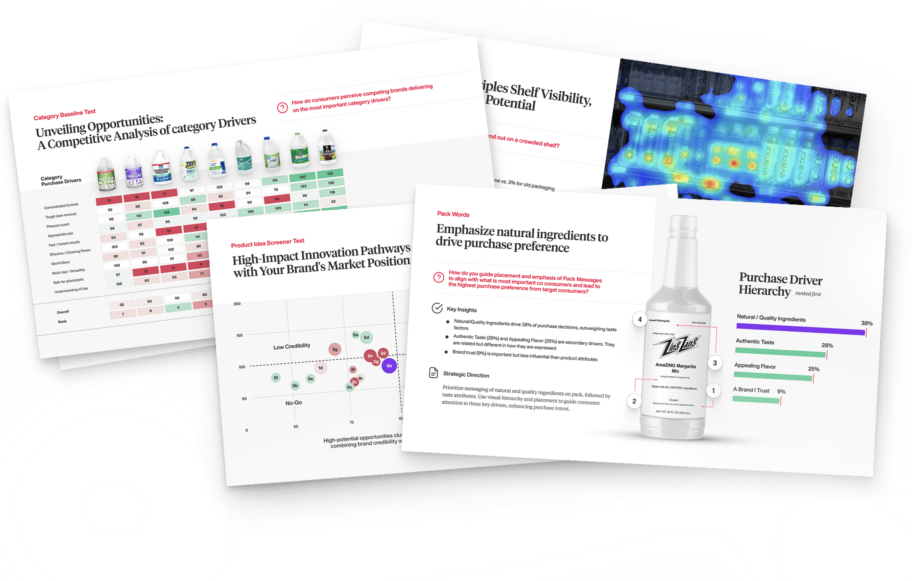You can spend hours brainstorming potential product names, rally your internal team around a favorite, and still miss the mark. Why? Because choosing a name based purely on internal opinion is a gamble most brands can’t afford.
In competitive spaces like CPG and FMCG, relying on gut instinct is a risky move. Instead, innovative brands use name testing to understand how their audience truly perceives a name, before committing. It’s a data-driven approach that removes bias and filters out the forgettable, low-impact options.
Using a structured test script, brands evaluate each name for readability, relevance, and emotional response. Whether you run an offline survey or digital test, each test module should follow a clear test code to ensure consistency across all formats, whether it’s a standalone test file or part of a broader module in your naming process.
In this article, we’ll walk through the name testing process, highlight best practices, and share a case study that proves why data should guide your next naming decision.
The concept of name testing.
Before selecting the perfect product naming architecture, it’s critical to grasp the purpose and structure of name testing. At its core, name testing is a feedback-driven process that involves direct input from your target audience, helping you test brand names with real-world relevance.
After generating a list of unit tests or potential brand names, these options are evaluated by your intended audience. Through surveys, polls, or interviews, participants assess the memorability, messaging, and emotional appeal of each name. The goal is to refine your product naming framework to ensure it aligns with both business objectives and brand identity.
This process goes beyond gut feeling. With brand name testing market research, companies gain quantifiable data to support strategic decisions. Whether you’re conducting brand name research or running product name testing scenarios, the result is an effective brand naming process rooted in consumer insight.
Modern tools have transformed how companies test company names. While earlier approaches relied heavily on small focus groups, today’s testing incorporates scalable, tech-driven solutions to deliver more accurate brand name analysis.
Suppose you’re wondering how to test a company name that truly performs in the marketplace. In that case, name testing is your first step, one that turns subjective preference into a competitive edge in the brand name competition.
Critical components of effective name testing.
The concept testing process consists of multiple steps. Each step requires a proper strategy to execute, bringing you one step closer to success. Let’s discuss all of the essential steps of the test process.
Identifying the target audience for name testing.
Before starting the testing process, companies have accurate information about their target market. They must know their target audience, including the age group and gender for which the product is intended.
Conducting thorough market research for the product naming exercises is extremely helpful. It provides meaningful insights into demographics, behaviors, and preferences, allowing companies to determine the suitable test class to gather feedback from.
Qualitative vs quantitative research for concept testing.
Companies use quantitative and qualitative research to gather valuable feedback on potential names. These two approaches offer distinct insights, ultimately yielding a business name that enhances the brand’s positioning.
Qualitative research is more exploratory and aims to understand the perceptions and opinions around each business name. Standard test methods include focus groups and one-on-one interviews. Researchers can probe participants more deeply into why they like or dislike specific naming conventions.
In contrast, quantitative research employs test methods on larger samples to generate numerical data that can be measured and statistically compared. The test process may use online surveys, A/B tests, and other experiments to gather helpful information for testing purposes.
Surveys may ask participants to rate names on memorability, appeal, or other predefined metrics. The goal is to understand name performance through measurable indicators, such as preference percentages, Net Promoter Score, and purchase intent uplift.
Criteria for evaluating potential names.
After conducting market research, the next step is to establish criteria through which you can evaluate potential names. When developing test cases to assess possible names with customers, define clear criteria like memorability, meaning, and appeal through method names like recognition testing, likability surveys, and purchase intent questions to effectively measure how each antigen test name resonates with your potential customers and guides the selection of the best-performing name.
Tools and techniques used in name testing.
To gather meaningful data, brands employ online surveys, focus groups, and A/B testing within custom modules to conduct name testing on potential names. Offline surveys, case studies, and unit testing with actual respondents also provide insights into which names best support the test case method name and related topics.
Meanwhile, quantitative tests deployed to a broader audience generate metrics such as recognition, appeal, and purchase intent that are easily measurable and compared across name options.
The name testing process.
The first step is to develop a pool of potential names. Brainstorm different types of names that align with your brand’s testing purpose. Conduct secondary research and drop the duplicate values.
Next, clearly define the Objectives and Parameters. Will you select a single name or narrow the pool? Determine the qualities you want to measure when developing different product naming strategies.
Some initial CPG testing methods include:
- Unaided surveys to gauge recognition of potential names.
- Aided surveys that present names for ratings on appeal, fit, etc.
- Focus groups are used to facilitate open dialogue and discuss perceptions.
Analyze all results before further testing through methods like:
- A/B surveys directly comparing top-performing names.
- Website testing of finalists on related topics.
After collecting feedback, analyze all results to determine the top performers. Look for convergence across quantitative metrics and qualitative themes. A name that rises to the top in unaided, aided, and direct comparison surveys, as well as focus group discussions, is vital for the right fit.
With the selection complete, further validation testing confirms your final choice. Methods like website conversion experiments and focus groups provide reassurance before launch. Proper name testing shepherds your new brand through a thorough vetting process with intended customers.
Analyzing name testing results.
Analyzing the data requires interpreting both quantitative and qualitative findings. Quantitative metrics from surveys show statistical performance but lack context. Meanwhile, qualitative feedback offers a more profound perspective but can be subjective. By evaluating them together, a clearer picture emerges.
Quantitative metrics reveal a name’s memorability, appeal, and strength of association through measures such as aided/unaided recall rates or Net Promoter Scores. Qualitative research illuminates why specific names resonated more through themes in open-ended responses.
Understanding consumer perception is critical. Focus groups provide valuable insights into how people intuitively process and remember names and attributes that are unconsciously linked to each option. Recall tests further unearth names’ top-of-mind awareness over time.
With both statistical performance and consumer perception in mind, outcomes point to the ideal choice. Corroborating data across methods confirms a genuine frontrunner. Names testing poorly require reevaluation against objectives.
A proper analysis yields confidence that the selected name will integrate smoothly into the brand identity and connect seamlessly with the target audience. It ensures marketing investment behind the name will pay dividends through strengthened customer relationships.
Common challenges and solutions in name testing.
Companies may face some common challenges when conducting name testing sessions. These challenges may dilute the brand name testing survey result or produce ambiguity and biases if not appropriately addressed. Let’s discuss these challenges one by one and gain a deeper understanding of them.
Ambiguity and misinterpretation.
Testing names out of context can lead to ambiguity or misinterpretation of meanings. Brand descriptions, taglines, or example products/services alongside names provide necessary framing. Pre-testing name definitions with focus groups can uncover any confusion to clear up.
Cultural and linguistic barriers.
Names carrying different connotations across regions or languages may not translate well universally. It’s essential to test names with geographically and culturally diverse groups. Consulting linguistic or cultural experts for international name testing can offer localized insights.
Legal and trademark issues.
Thorough trademark searches are a must to avoid potential conflicts. But even cleared names may encounter issues during use. Having trademark attorneys review top performers mitigates risks. Testing names as phrases in addition to standalone words further reduces ambiguity within trademark classes.
With diligence, name testing yields optimal outcomes. But being flexible is crucial – retesting may be necessary if significant issues emerge. Overall, a collaborative approach resolves challenges. Marketers work closely with legal, product, and research teams to continually improve methodologies.
The goal is to gather clean, reliable data to inform decisions. While obstacles arise, learning from each experience helps refine best practices. With experience, even the most difficult names or markets become testable. Most importantly, prioritize high-quality feedback.
Advanced techniques in name testing.
With technological advancements, several new methods for conducting effective name testing and accurately interpreting the test results have emerged. Companies can utilize these technologies effectively to level up their game and select the most suitable naming convention.
Utilizing technology and AI.
Leveraging technologies like facial coding allows for analyzing micro-expressions when viewing names. It reveals subconscious reactions. AI can efficiently evaluate massive datasets to surface trends. Tools that integrate social listening help identify existing perceptions and attitudes. Online testing platforms effectively engage diverse, global audiences at a cost.
Applying psychological principles.
Principles like the mere exposure effect demonstrate that repeated exposure can improve attitudes over time. Testing names this way uncovers the most adaptable options. Framing names in a product context activates brand-related mindsets. Implicit association testing sheds light on unconscious perceptions.
Integrating with brand strategy.
Brand naming tests allow making informed decisions regarding positioning and messaging. Companies can guide their strategic efforts by analyzing which names align with the brand’s vision and attributes. Comparing names against those of competitors can provide a competitive advantage. Tracking how names influence later brand touchpoints is essential to ensure strategic alignment throughout the customer journey.

Path to Performance™
Taking a results-obsessed approach to CPG package design.
Discover how SmashBrand’s proprietary process, rooted in scientific principles, informed by data, and validated by your target audience, eliminates the guesswork from package design and delivers guaranteed results.
Future trends in name testing.
Future trends in name testing will see the continued development and use of advanced techniques. As methods like artificial intelligence improve, more sophisticated practices, such as naming scorecards that combine diverse quantitative and qualitative metrics into a single score, may better evaluate name suitability across objectives. This could help streamline the analysis of the naming process.
The role of globalization will also be essential to consider, as names will face increasing pressure to work in many international markets. Testing platforms that facilitate simultaneous worldwide testing may aid rapid global expansion by leveraging a naming scorecard approach.
Consumer behavior and preferences will also evolve. Testing will need to explore how names align with values around sustainability, diversity, inclusion, and other emerging trends. Refreshed name cycles may be required to maintain relevance.
A data-driven approach to brand & product naming.
Are you having difficulty choosing a great name for your brand and products? We can help. Our data-driven strategy process helps identify brand and naming opportunities. As your naming agency, we help you discover the potential name with the highest impact by conducting thorough testing. Subsequently, our design team incorporates this name into the packaging design and branding strategy.

Nice Package
Don’t miss out on our monthly newsletter Nice Package!
Each month, we deliver a data-driven newsletter directly to your inbox, unpacking a critical topic in the FMCG & CPG industry.
"*" indicates required fields
Subscribe to
Nice Package.
A monthly newsletter that unpacks a critical topic in the FMCG & CPG industry.
Free Resource.

CPG product repositioning guide.
Explore the five undeniable signs your CPG product needs repositioning along with strategies for leveraging consumer insights for a guaranteed market lift.
Learn More About CPG product repositioning guide.



